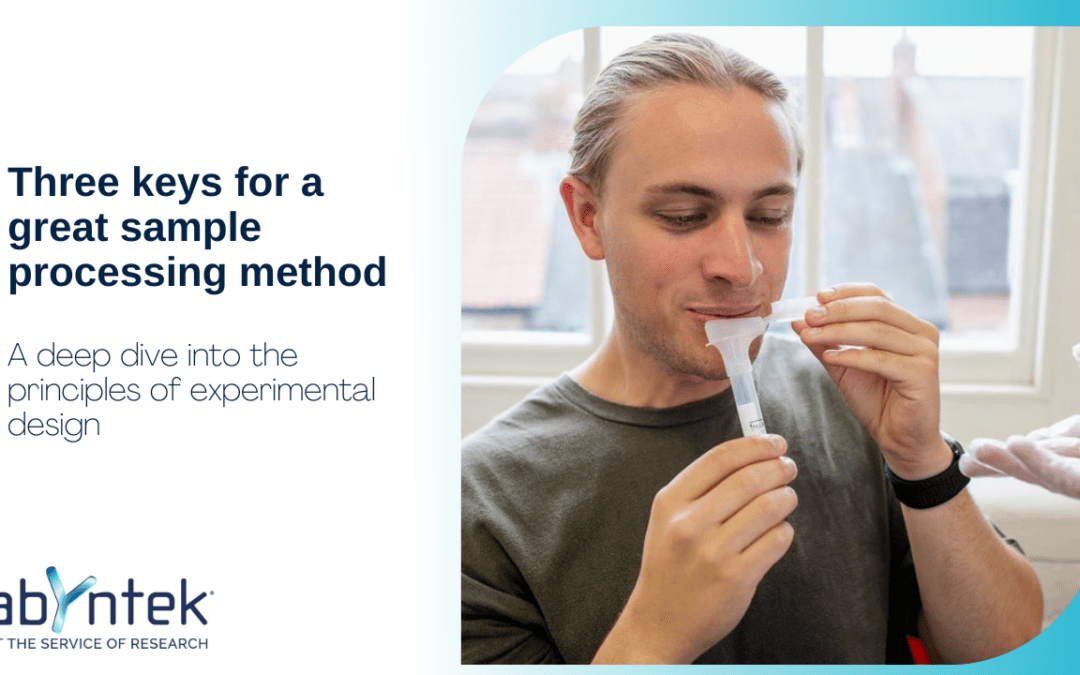Index
- Introduction
- Sample Neutrality
- Sample stability
- Sample Reproducibility
- DNA Genotek: An example of excellence
- Conclusion
Introduction
Sample processing is a key step in any experiment, and selecting the best method for it is one of the most essential parts of any experimental design. That’s why, the first thing to keep in mind is the sample-taking and storaging methodology and technique. A solid experimental design and a suitable sample-collecting method can be the difference between a published paper and one that stays on the computer.
That’s why, when deciding what processing method to use, it is vital to keep in mind a myriad of factors such as price, simplicity, invasiveness, storage… However, the precision and scientific adequacy of the technique will always be a priority.
In this article, we talk about the three key characteristics of a good sample processing method, that can define if the research is a success or a waste of time and money.

Sample neutrality
In any kind of experiment, sample neutrality should be one of the top priorities. The concept refers to the idea that the sample, recollected and stored, should be as similar as possible to the original state.
Of course, this is understood within the context of the planned analysis. If the intent is to extract genetic material, DNA or RNA, it will suffice for the processing method to respect the integrity of that particular molecule.
In experimental design, the neutrality of a processing method is measured by comparing two samples, a fresh one and a stored one. However, there are methods and brands that guarantee high neutrality on their recollection kits, saving us the hustle of comparing.
Sample stability
Similarly, it is indispensable to keep the sample stable once stored. In this case, the method of processing and storing the sample is critical, as many experiments tend to extend themselves through time, making the need to process different samples at different times a reality.
The taking of a biological sample should be carried out in such a way as to guarantee its stability in the time it is going to be stored, avoiding its degradation. If not, the subsequent analysis will not represent reality at all. To prevent false negatives and positives, as well as statistical deviations, it is enough to take a series of measurements in the experimental design.
In the case of the stability of a sample, the different collection and storage methods resort to techniques depending on the nature of the sample, using chemical products to stabilize it and avoid degradation or coagulation, freezing it to avoid enzymatic action or growth of bacteria and even purifying the antigen sought in the early phases of the study to use it later.
Sample reproducibility
Finally, it is assumed that the samples drawn from the same individual and following the same methodology should be similar. After all, the conclusions of any experiment or investigation rest on the reproducibility of the results.
That is why in many experimental designs triple extractions of each sample are performed, in order to ensure that the sample is reproducible, and therefore, the results are conclusive.
A bad experimental design can stop the publication of a study dead, to the point of forcing its repetition or forcing its duration to be extended for years by obtaining additional data. That’s why keeping these principles in mind is so vital before you even step into the lab.

DNA Genotek: An example of excellence
In human health research, there is no better example of the application of these principles than DNA Genotek. Producers of the best human genetic material and microbiota sample collection kits, DNA Genotek keeps these three principles at the centre of its development process.
This is the case of its saliva-based sample collection kits, among others. Not only are they easy to use, scalable, and minimally invasive, but the ease of sample collection makes them incredibly reproducible.
Its sample preservation process is based on chemical interactions that do not damage DNA, thus keeping it perfectly neutral and incredibly stable at room temperature.
Conclusion
An experimental design that suits the experiment and the means of the scientific team can separate a published project from another that remains in the pipeline.
Ensuring that sampling is capable of keeping samples neutral, stable, and reproducible is the first step on the road to successful research.



